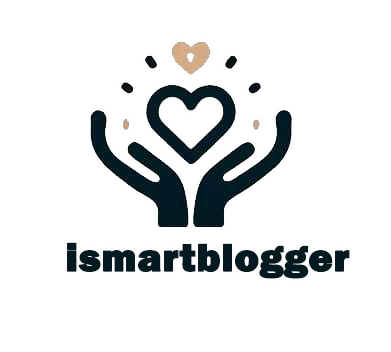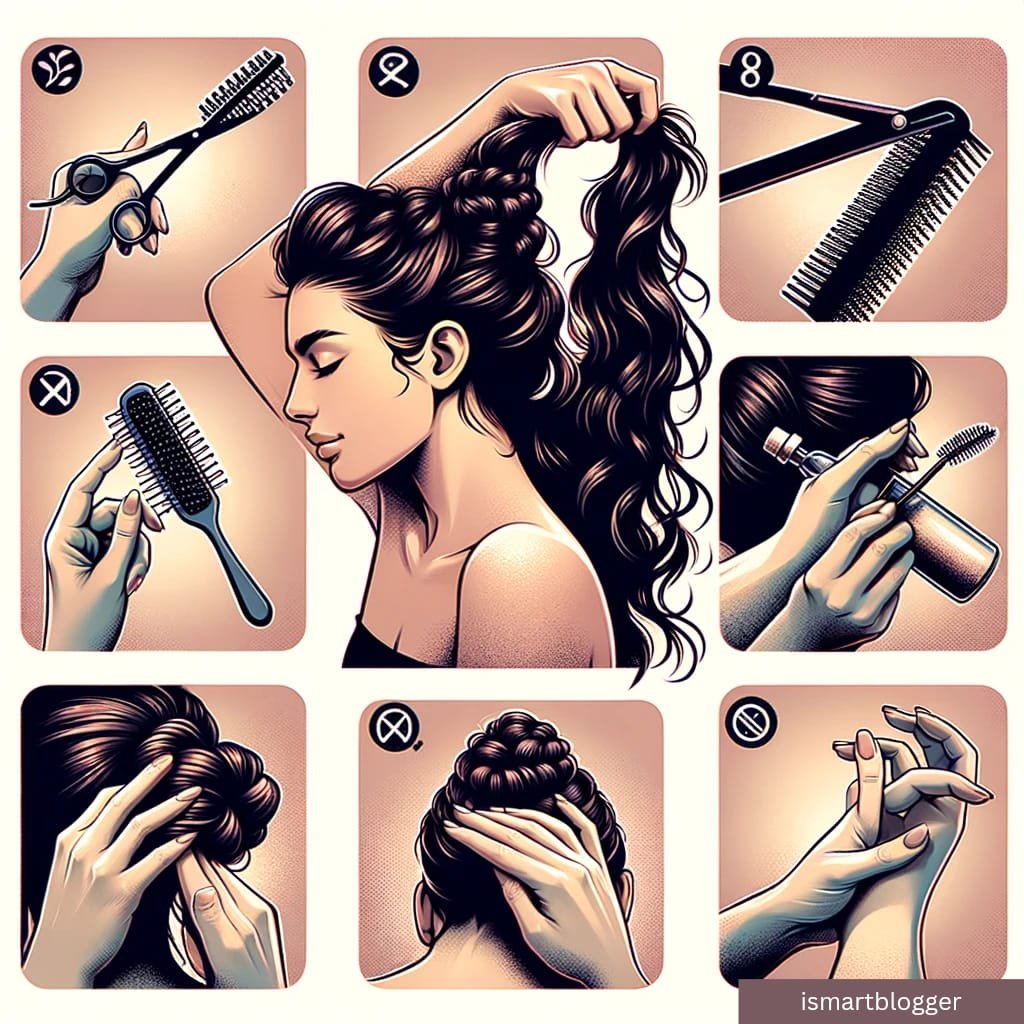Introduction
Our hair is not just a mere extension of our physical appearance; it is an expression of our personality and style. The way we style our hair can convey confidence, poise, and individuality. Hair styling plays a significant role in enhancing our overall appearance, making it essential to explore various methods to achieve the desired look without relying on gel or other products.
The Importance of Hair Styling
Hair styling is an art form that allows us to experiment with different looks and transform our appearance effortlessly. It holds the power to boost our self-esteem, leaving us feeling more confident and radiant. A well-styled mane can complement our facial features, frame the face beautifully, and even make a fashion statement.
Moreover, hair styling holds cultural significance across different societies and periods. From elaborate updos that symbolize elegance to natural hairstyles that celebrate individuality and heritage, the way we choose to style our hair reflects societal norms, trends, and personal values.

Exploring Alternative Methods without Using Gel or Other Products
Gel has long been a staple in hairstyling routines for its ability to provide hold and control for various styles. However, some individuals prefer alternative methods due to personal preferences or concerns about potentially harmful ingredients often found in traditional hair products.
In this article, we will delve into alternative techniques that enable you to style your hair effectively sans gel or any other product. These methods involve understanding your unique hair type and texture, properly preparing your locks for styling success, utilizing heat styling tools effectively (if desired), embracing natural hairstyles that enhance your innate beauty, incorporating accessories creatively into your look, and maintaining healthy tresses throughout the process.
Understanding your hair type and texture
Different hair types (straight, wavy, curly, coyly)
When it comes to styling your hair without gel or other products, it is essential to understand your hair type. Hair can be broadly categorized into four main types: straight, wavy, curly, and coily. Straight hair is characterized by its lack of natural curl or wave pattern and tends to be smooth and sleek.
Wavy hair falls somewhere between straight and curly, with a gentle S-shaped pattern that adds natural volume and movement. Curly hair forms tighter curls or ringlets, while oily hair has the tightest curl pattern with a distinct spring-like structure.
Identifying your specific hair texture (fine, medium, thick)
In addition to understanding your overall hair type, it is important to identify your specific hair texture. Texture refers to the thickness or diameter of each strand of hair.
Hair can generally be classified as fine, medium, or thick. Fine textured hair strands are smaller in diameter and can appear more delicate than other textures.
Medium-textured strands have a moderate thickness that falls between fine and thick. Thick-textured strands are larger in diameter and tend to have more volume.
How hair type and texture affect styling options
Your specific combination of hair type (straight, wavy, curly, coily) and texture (fine, medium, thick) greatly influences the styling options available without using gel or other products. For example:
– Straight fine-haired individuals may find that their locks tend to become limp when styled without product assistance. – Wavy-haired individuals can embrace their natural waves by enhancing them with certain techniques.
– Curly-haired individuals might need methods that emphasize definition while minimizing frizz. – Coily-haired individuals may focus on techniques that maintain hydration for healthy and bouncy curls.
By understanding your hair type and texture, you can tailor your styling techniques to best suit your unique attributes. Remember that experimenting with different methods is key to finding what works best for you.
Preparing your hair for styling
Properly washing and conditioning your hair
Before diving into the world of product-free hair styling, it is essential to establish a solid foundation by properly washing and conditioning your hair. Cleansing your hair effectively removes dirt, excess oils, and any product buildup that might hinder styling.
When choosing a shampoo, consider your specific hair type to ensure optimal results. For example, individuals with oily scalps may benefit from a clarifying shampoo that controls sebum production, whereas those with dry or damaged hair may prefer a moisturizing shampoo.
After rinsing out the shampoo thoroughly, it’s time to condition your hair. Selecting the right conditioner is crucial as it helps replenish moisture and nourishment lost during the cleansing process.
Look for conditioners that match your hair type and address any specific concerns you may have, such as frizz control or color protection. Apply the conditioner from mid-length to ends while avoiding the roots if you have fine or easily weighed-down hair.
Choosing the right shampoo and conditioner for your hair type
Understanding your hair type is key when selecting suitable shampoos and conditioners for optimal styling results. If you have straight or fine hair, lightweight formulas are typically recommended to avoid weighing down the strands. Look for volumizing shampoos containing ingredients like rice protein or collagen that add body without leaving residue.
For those with wavy or curly locks, moisturizing shampoos that provide hydration are ideal since these textures tend to be more prone to dryness. Additionally, consider sulfate-free options as they are less likely to strip away natural oils essential for maintaining healthy curls.
Individuals blessed with thick or coarse tresses should opt for richly moisturizing shampoos and conditioners designed to nourish and soften unruly strands. Ingredients like shea butter or argan oil can help tame frizz and promote manageability.
Techniques to enhance natural shine and manageability
Once your hair is washed and conditioned, there are various techniques you can employ to enhance its natural shine and manageability without relying on styling products. One tried-and-true method is rinsing your hair with cold water after conditioning. This helps seal the cuticles, reducing frizz and adding an enviable glossy finish.
Another technique to amplify shine is incorporating a vinegar rinse into your hair care routine. Mix one part apple cider vinegar with four parts water, then pour it over your hair as a final rinse after shampooing and conditioning.
The acidity of the vinegar smooths the hair cuticle, resulting in increased shine. To promote manageability, consider using a wide-toothed comb or a detangling brush when your hair is damp.
Starting from the ends and working your way up prevents breakage and minimizes potential damage caused by harsh brushing. Remember that proper washing, suitable products for your specific hair type, and effective techniques all play vital roles in preparing your tresses for successful product-free styling adventures.
Towel Drying Techniques for Natural Volume
Avoiding Rough Towel Drying that Causes Frizz
One common mistake many people make while towel drying their hair is being too rough, which often leads to frizz. When you vigorously rub your hair with a regular towel, the friction disrupts the hair cuticles, causing them to become rough and prone to frizz. To avoid this, it is essential to handle your hair gently during the drying process.
Use a Microfiber Towel or an Old T-shirt to Gently Squeeze Out Excess Water
Instead of using a regular terrycloth towel, opt for a microfiber towel or an old t-shirt. These materials have a smoother texture and are more absorbent than regular towels.
Gently wrap your hair in the microfiber towel or t-shirt and squeeze it lightly to remove excess water. Avoid twisting or wringing out your hair as it can cause damage and frizz.
By using a microfiber towel or an old t-shirt, you will be able to minimize friction on the hair surface, thus reducing frizz. These materials also help in retaining moisture within the strands, resulting in smoother and shinier locks.
Flipping Your Head Upside Down While Drying for Added Volume
To add natural volume to your hair while drying, try flipping your head upside down during the process. This technique utilizes gravity to lift the roots of your hair away from the scalp, creating instant volume.
While still wrapping your hair with a microfiber towel or t-shirt, bend forward at the waist so that your head is facing downward. Allow your damp locks to hang loosely towards the ground and gently pat dry using the cloth.
This upside-down method not only aids in achieving voluminous roots but also provides better airflow at the crown area while removing excess moisture without causing frizz. Once you have finished drying in this position, flip your head back up and style your hair as desired.
Remember, towel drying is a crucial step in achieving natural volume without relying on gel or other products. By adopting these techniques, you can ensure that your hair maintains its natural texture while minimizing frizz and maximizing volume for a stunning hairstyle.
Utilizing heat styling tools effectively Blow-drying techniques without using gel or heat protectant sprays
When it comes to blow-drying your hair without relying on gel or heat-protectant sprays, there are a few key techniques to keep in mind. Firstly, it’s important to start with damp, not soaking wet, hair. After washing your hair, gently squeeze out excess moisture using a microfiber towel or an old t-shirt.
This reduces the risk of frizz and allows for better control during the blow-drying process. To enhance natural curls or waves, consider using a diffuser attachment on your blow dryer.
Attach the diffuser and set your blow dryer to its lowest heat setting. Flip your head upside down and gather sections of your hair into the diffuser, allowing the warm air to circulate through the strands.
Cupping each section with the diffuser helps amplify curls and waves while minimizing frizz-causing manipulation. For those seeking sleek straight styles without gel or other products, a paddle brush can be incredibly useful.
Start by sectioning your hair into manageable portions and holding each section taut with one hand while brushing through with long even strokes using the paddle brush in your other hand. This technique helps distribute natural oils from roots to ends, promoting shine and minimizing static electricity that can cause flyaways. Using a diffuser attachment to enhance curls or waves
A diffuser attachment is an invaluable tool for those looking to enhance their natural curls or waves without relying on gels or creams. The unique design of a diffuser allows for gentle airflow distribution while reducing frizz-inducing disturbance in curly hair patterns.
Start by applying a leave-in conditioner or curl-enhancing cream throughout damp hair after washing and conditioning it thoroughly. Divide your hair into sections and gently place each section onto the prongs of the diffuser attachment.
Allow the warm air from the blow dryer to flow through the diffuser and reach your hair from all angles. This helps define and amplify curls or waves while minimizing heat damage.
To enhance curls, you can scrunch your hair gently while using the diffuser. Scrunching involves squeezing sections of your hair upwards towards your scalp in a gentle upward motion.
This encourages the formation of well-defined curls and adds volume to your style. Remember to keep the heat setting low to avoid excessive drying or potential damage to your precious locks. Creating sleek straight styles with a paddle brush
For those seeking sleek, straight hairstyles without relying on gels or creams, a paddle brush can be a game-changer. This versatile tool not only detangles hair effectively but also helps in achieving a smooth and polished look. Start by applying a heat protectant spray onto damp hair after washing and conditioning it thoroughly.
Begin blow-drying your hair until it is about 80% dry using just your fingers as you run them through your strands. Once most of the moisture is gone, divide your hair into manageable sections and use a paddle brush in long, even strokes from roots to ends for maximum control.
To minimize frizz and ensure an ultra-straight effect, hold each section taut with one hand while brushing through with the paddle brush in the other hand. The tension created by pulling the section taut allows for better control over each strand, resulting in smoothness and sleekness without any product assistance.
Remember that patience is key when attempting sleek straight styles without gel or other products. Taking small sections at a time ensures thorough drying and allows you to work through each strand meticulously for impeccable results.
Embracing natural hairstyles
A. Enhancing curls with the pineapple method when it comes to styling your hair without the use of gel or other products, one fantastic technique that can enhance your natural curls is known as the pineapple method. This method is especially beneficial for those with longer hair. To achieve this look, start by gathering all your hair at the crown of your head and securing it loosely with a scrunchie or fabric hairband. The idea is to create a high, loose ponytail that resembles the shape of a pineapple, hence the name. The pineapple method works to preserve and enhance your curls overnight while preventing flattening or frizzing. The key is to use a scrunchie or fabric hairband instead of an elastic band because they won’t leave dents or creases in your hair. By keeping your curls gathered at the top of your head, you allow them to maintain their shape and bounce while you sleep. In the morning, simply release the ponytail and gently fluff your curls with your fingers for soft and defined locks.
B. Creating braids or twists for textured looks without product brands and twists are excellent way to add texture and style to your natural hair without relying on gels or styling products. These techniques work wonderfully on various hair types, providing versatility and an opportunity for creativity. To create braids or twists without product, start by dividing damp or dry hair into sections that suit the desired thickness. You can experiment with thin braids for intricate designs or thicker ones for a more relaxed look. Begin braiding each section tightly from root to tip until complete, ensuring that each strand is secure before moving on. If you prefer twist styles over braids, follow a similar process but instead of weaving strands over one another as in braiding, twist them together from root to tip. This technique creates beautiful and defined twists that can be left as is or unraveled for a more voluminous appearance.
C. Experimenting with updos like buns or top knotsUpdos is a classic and elegant way to style your hair without relying on gel or other products. Buns and top knots, in particular, offer simplicity and versatility for any occasion. To create a bun without product, start by gathering your hair into a high ponytail. Twist the ponytail tightly until it coils around itself to form a bun shape at the crown of your head. Secure it with bobby pins, making sure they’re concealed within the bun for an effortless look. For a more casual feel, opt for a top knot. Begin by gathering all your hair at the crown of your head and securing it with an elastic band to create a high ponytail. Then wrap the length of the ponytail around the base, forming a knot-like shape. Secure it in place with bobby pins and gently tug on some strands near your face to add softness. By experimenting with different updo styles like buns or top knots, you can achieve chic hairstyles that don’t require any styling products while still looking polished and sophisticated.
Incorporating accessories into your hairstyle
Accessories are a wonderful way to elevate your hairstyle and add a touch of personality to your look. Whether you’re aiming for a casual or formal style, there are numerous options to experiment with.
One of the simplest and most versatile accessories is a headband. Headbands come in various styles, materials, and widths, allowing you to find the perfect one to suit your taste and hair type.
For instance, if you have long wavy hair, opt for a boho-inspired headband made of braided leather or adorned with flowers. If you have shorter hair, consider a thin fabric headband that adds an elegant touch without overwhelming your hairstyle.
Scarves and ribbons are also excellent additions for adding flair to your hair. A silk scarf can be tied around a ponytail or bun for a sophisticated look, or wrapped around your head like a bandana for a chic retro style.
Experiment with different prints and colors that coordinate with your outfit to create a striking visual impact. Similarly, satin ribbons can be woven into braids or used as headbands for an enchanting touch.
Styling with bobby pins, clips, or combs for different looks
Bobby pins are small yet mighty tools that can transform any hairstyle in minutes. They come in various colors and finishes to match your hair color or create interesting contrasts.
For an effortless updo, twist your hair into a loose bun at the nape of your neck and secure it with bobby pins artfully arranged in an X-shape pattern from all angles. This creates an elegant twisted effect while keeping the style secure throughout the day.
If you prefer more intricate styles like braids or twists, consider using decorative clips along the length of the braid or twist for added visual interest. Choose clips that complement your outfit or reflect your style.
For example, if you’re attending a formal event, opt for jeweled or metallic clips to add a touch of glamour. On the other hand, for a bohemian-inspired look, incorporate wooden or flower-shaped clips that evoke natural beauty.
Exploring unique accessories like flowers or feathers
If you’re looking for something truly unique and eye-catching, incorporating unconventional accessories like flowers or feathers can take your hairstyle to the next level. Fresh flowers are particularly enchanting and can be woven into braids or pinned strategically throughout your hair for an ethereal and romantic look. Consider using larger statement flowers such as roses or orchids as focal points and smaller wildflowers to create delicate accents.
Feathers, on the other hand, can add a touch of bohemian whimsy to any hairstyle. Peacock feathers are especially popular due to their vibrant colors and beautiful patterns.
Attach a small cluster of feathers near the base of a ponytail or incorporate them into an updo for an intriguing contrast against your hair. It’s important to note that when using natural materials such as flowers or feathers in your hair, ensure they are secure but not too heavy so that they won’t cause discomfort throughout the day.
By incorporating accessories into your hairstyles such as headbands, scarves, bobby pins, clips, combs, flowers, or feathers you can create endless possibilities for unique and stylish looks without relying on gel or other products. Experiment with different options based on your style and occasion to elevate your hairstyle effortlessly.
Maintenance and Longevity of the Style
Protective styles for overnight maintenance
To preserve your hairstyle without gel or any product, it is crucial to protect it while you sleep. One practical option is to wrap your hair with a silk or satin scarf before bed.
This helps minimize friction and prevents frizz and tangles. Another method is to sleep on a silk or satin pillowcase, which provides a smooth surface for your hair to glide over during the night.
Additionally, you can try pineapple-ing your hair by gathering it at the top of your head and securing it loosely with a scrunchie or soft hairband. This technique helps maintain volume and definition in curly or wavy hairstyles.
Regular cleansing routine
While styling without gel or any other product, maintaining a regular cleansing routine is essential for healthy hair and scalp. Opt for sulfate-free shampoos that gently cleanse without stripping natural oils from your hair.
Remember to focus on massaging the scalp to remove dirt, excess oil, and product buildup. Following up with a moisturizing conditioner helps restore hydration after shampooing and detangles your hair effortlessly, making future styling easier.
Avoiding excessive heat styling
To ensure the longevity of your hairstyle without relying on gel or other products, it’s important to minimize heat styling as much as possible. Excessive heat can lead to dryness, damage, and loss of definition in natural hairstyles.
Whenever feasible, embrace air-drying techniques instead of using blow dryers or straighteners that produce high heat levels. If you do choose to use heat styling tools occasionally, always apply a heat protectant spray beforehand to create a barrier between the hot tool and your hair strands.
Conclusion
Styling your hair without gel or any other product may initially seem challenging but is entirely possible with the right techniques. By understanding your hair type and texture, preparing it properly, and exploring alternative styling methods, you can achieve beautiful hairstyles without relying on products.
From towel drying for natural volume to embracing your hair’s natural texture and incorporating accessories creatively, there are numerous options available to showcase your unique style and personality. Remember to maintain and protect your hairstyle through proper overnight maintenance, regular cleansing routines, and minimizing heat styling.
Embracing this gel-free approach not only allows you to express yourself authentically but also promotes healthier hair in the long run. So go ahead, experiment with these techniques, and embrace the beauty of your naturally styled hair!





